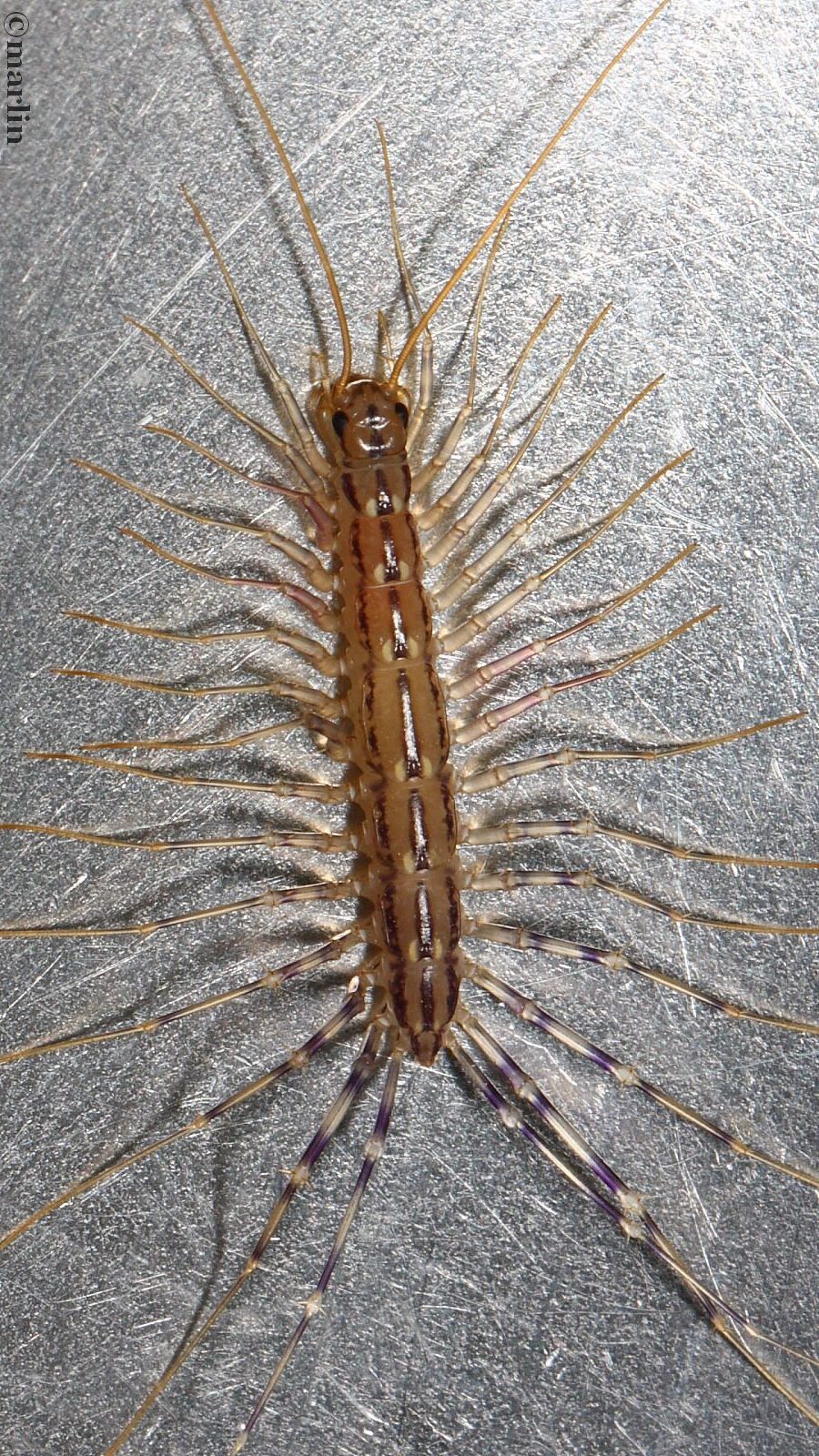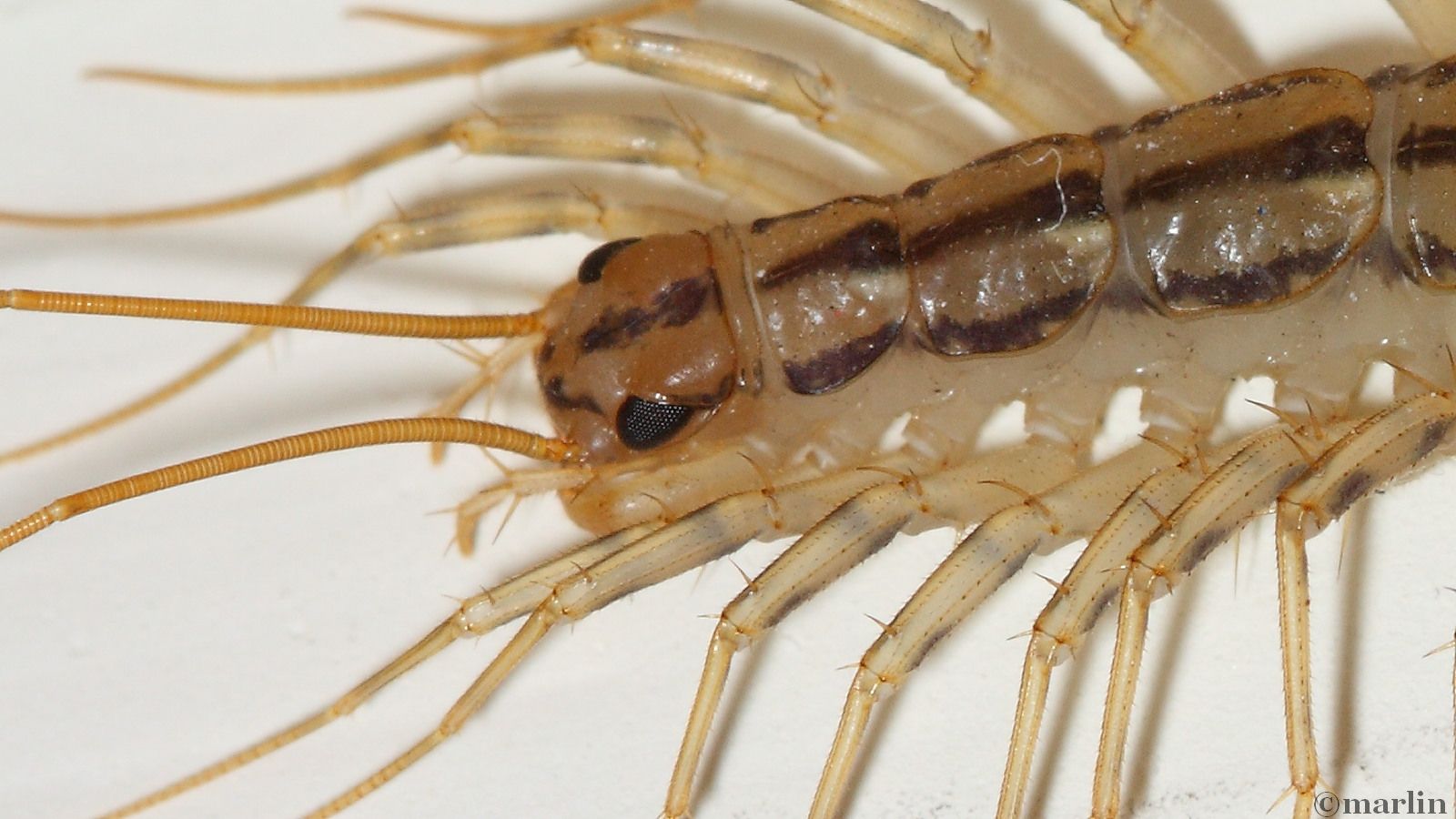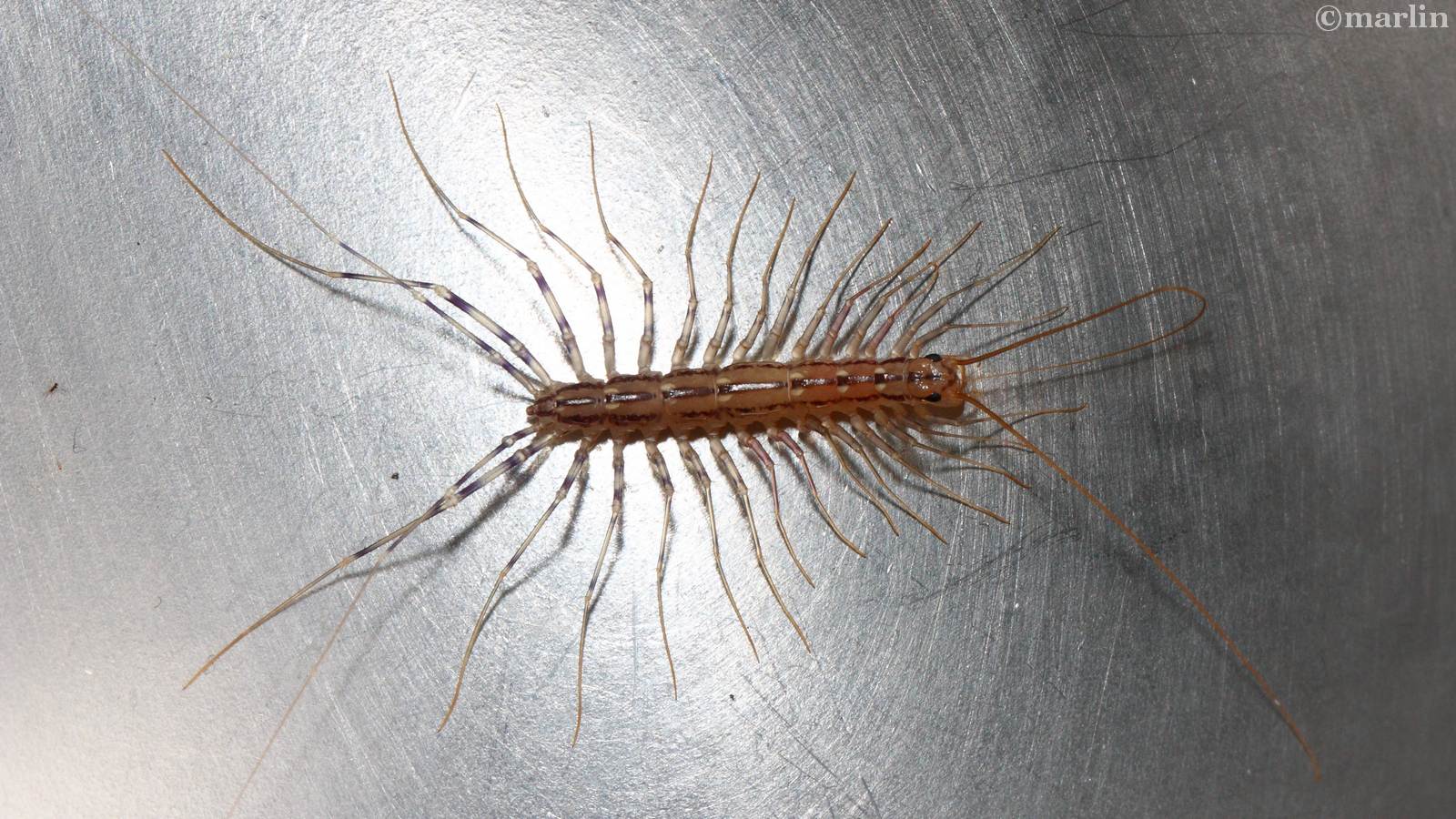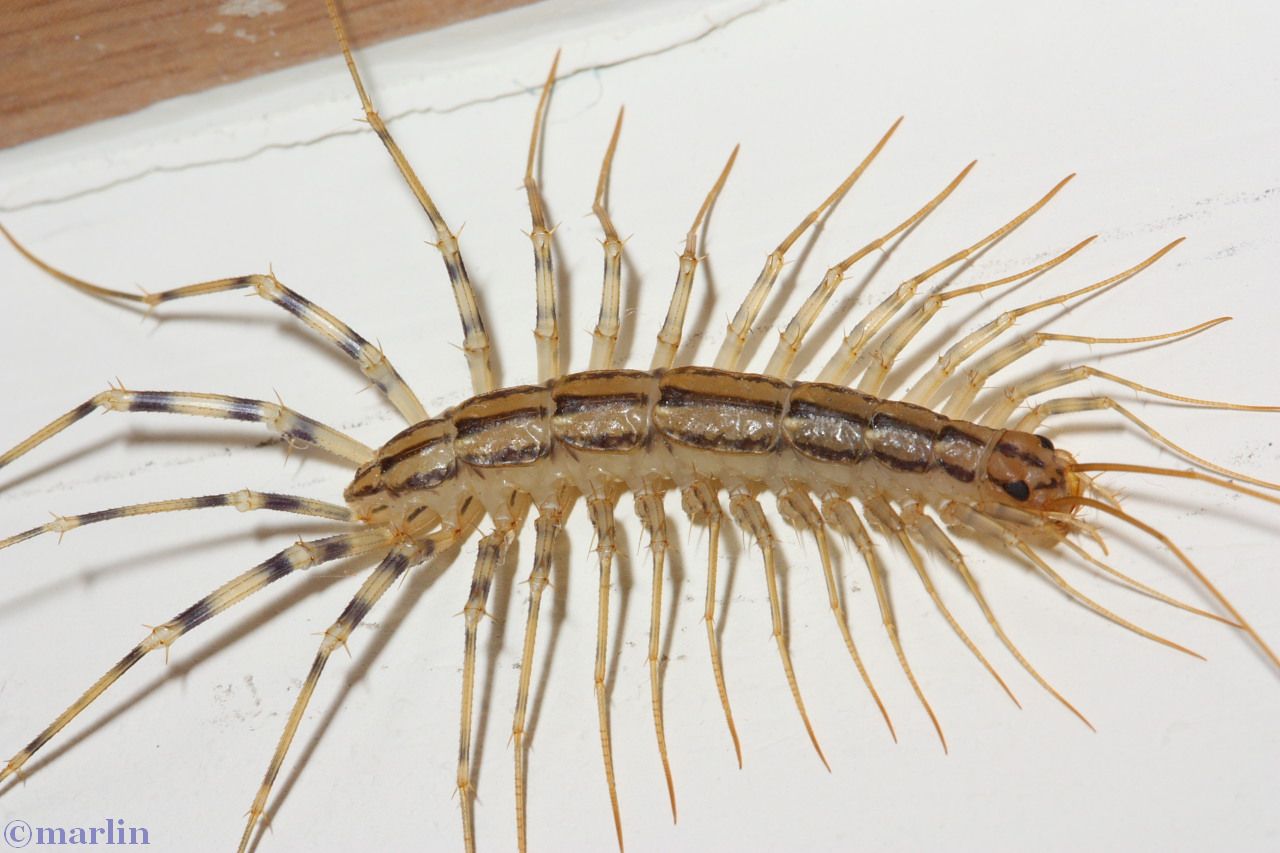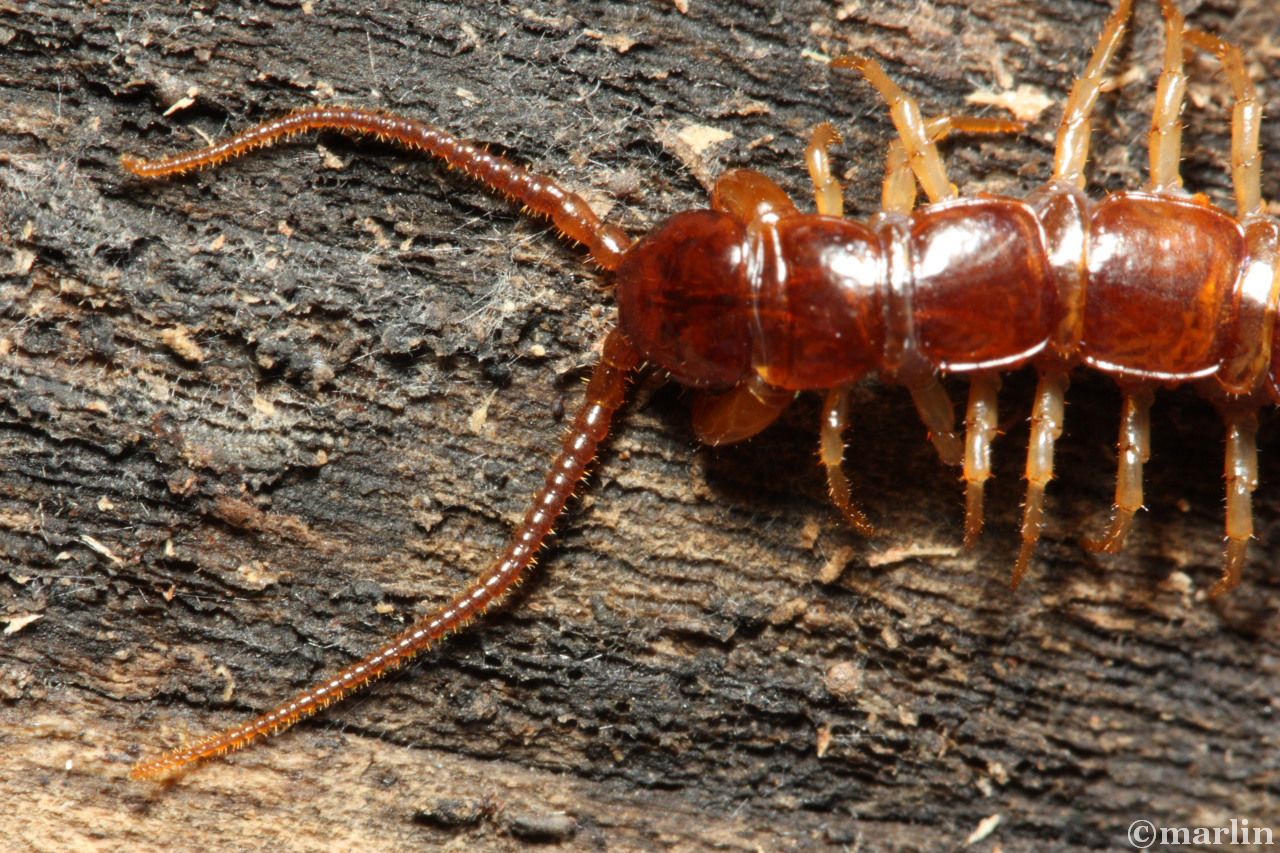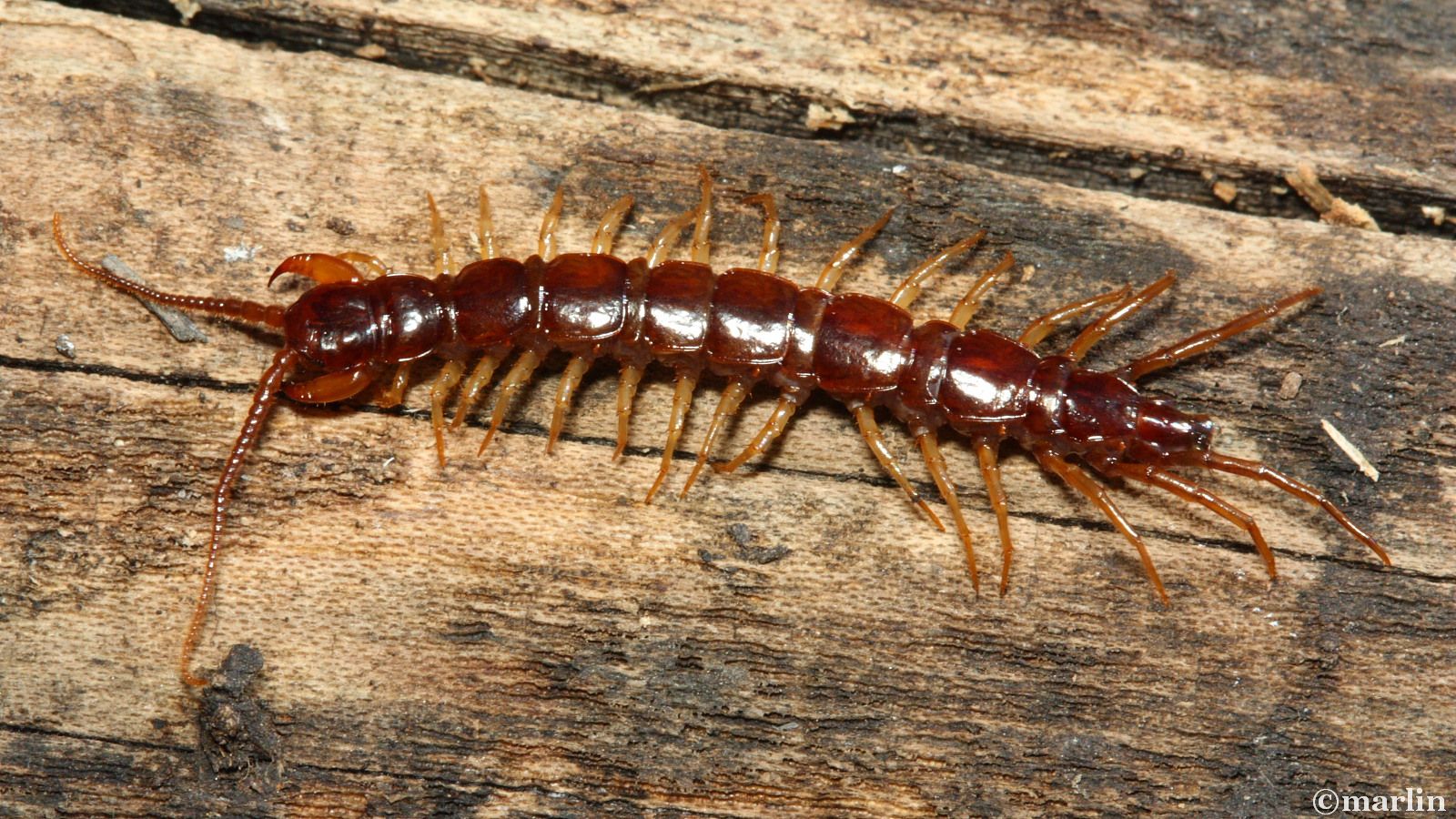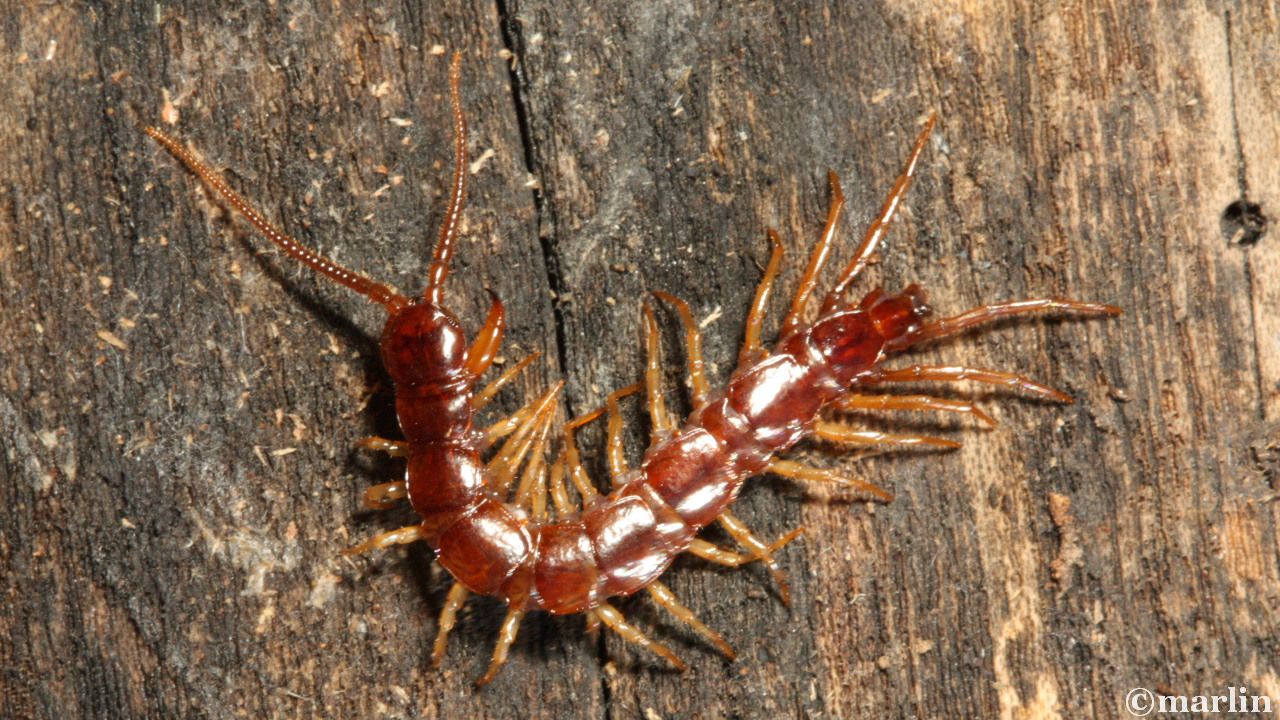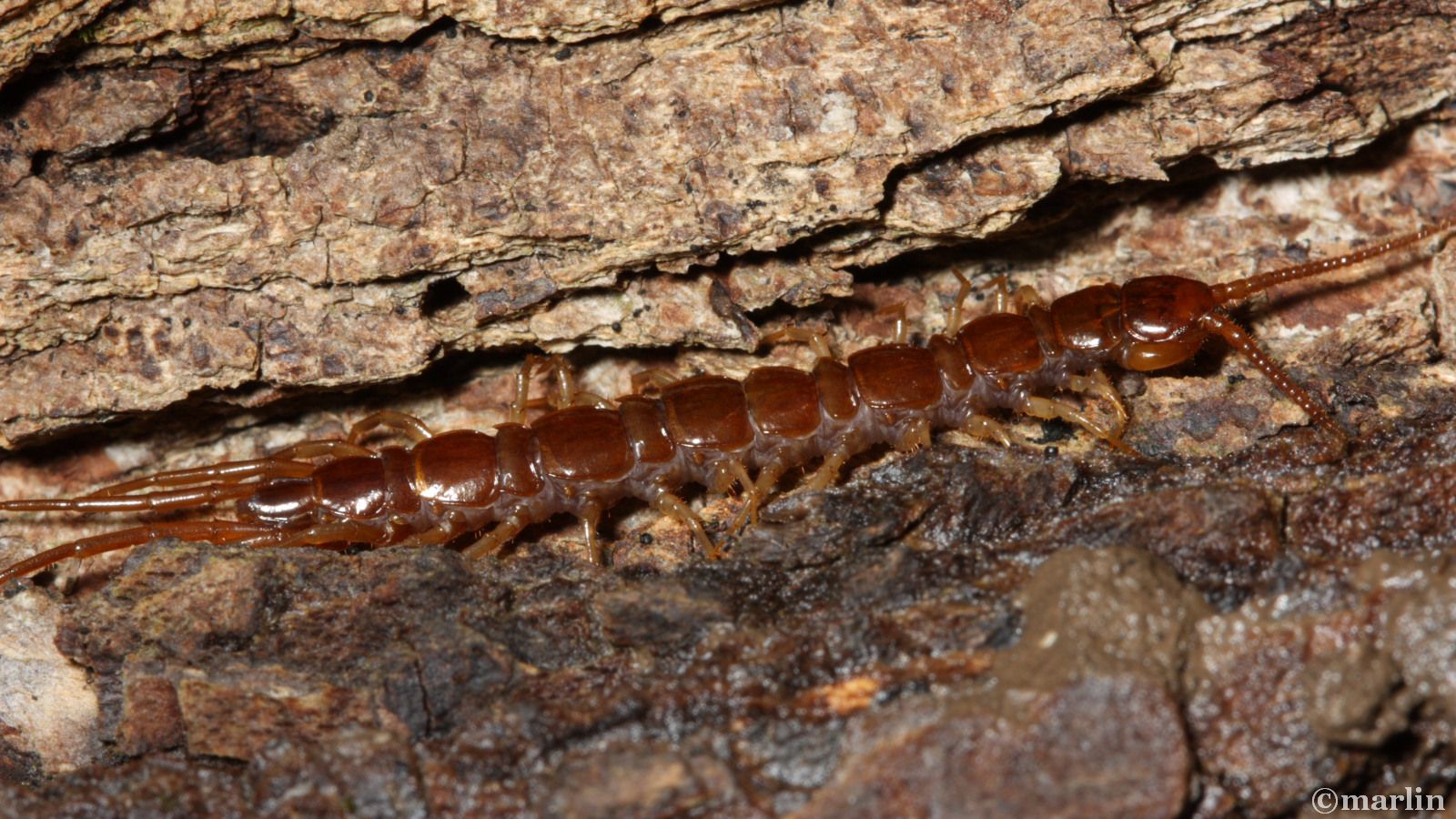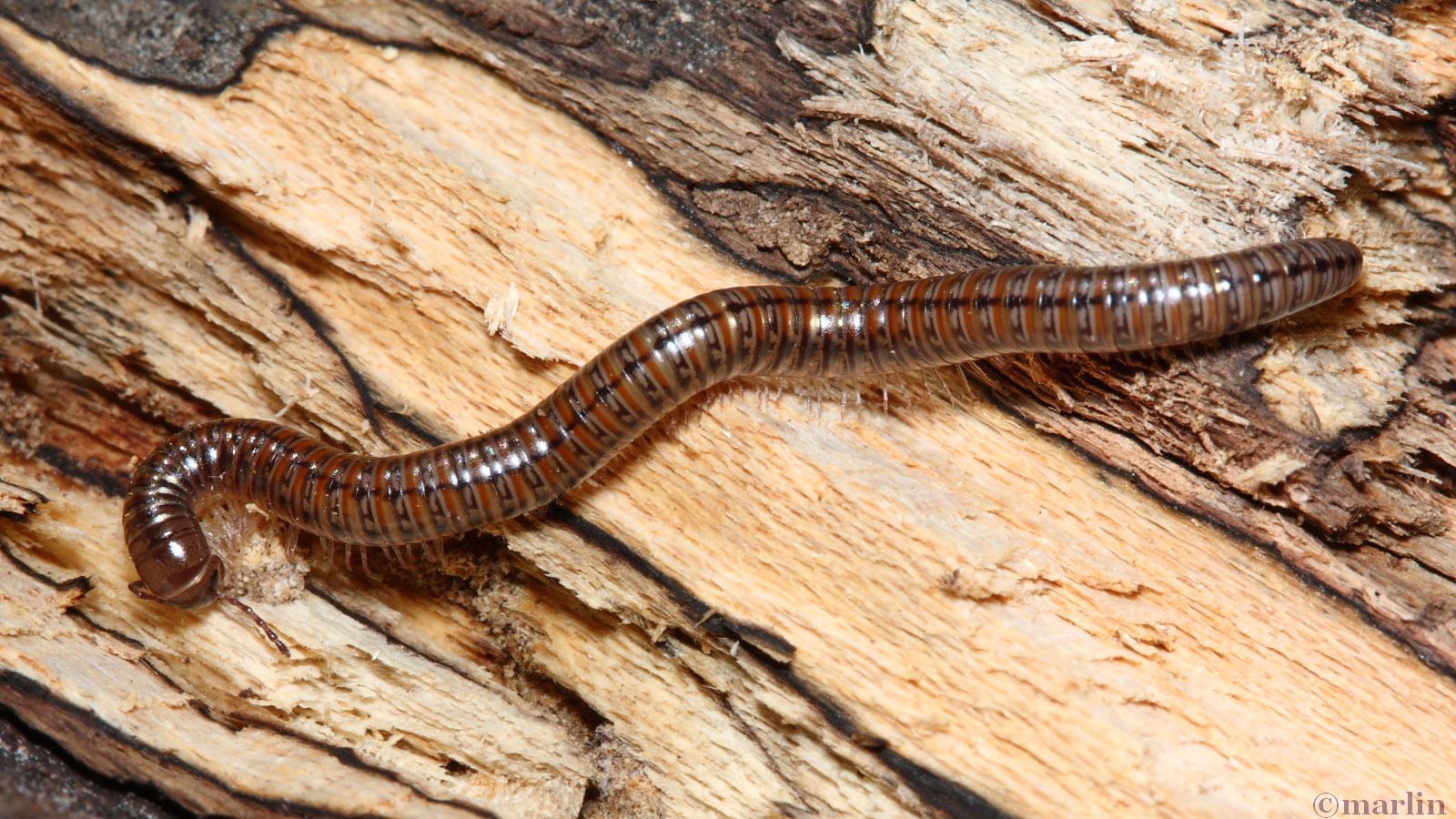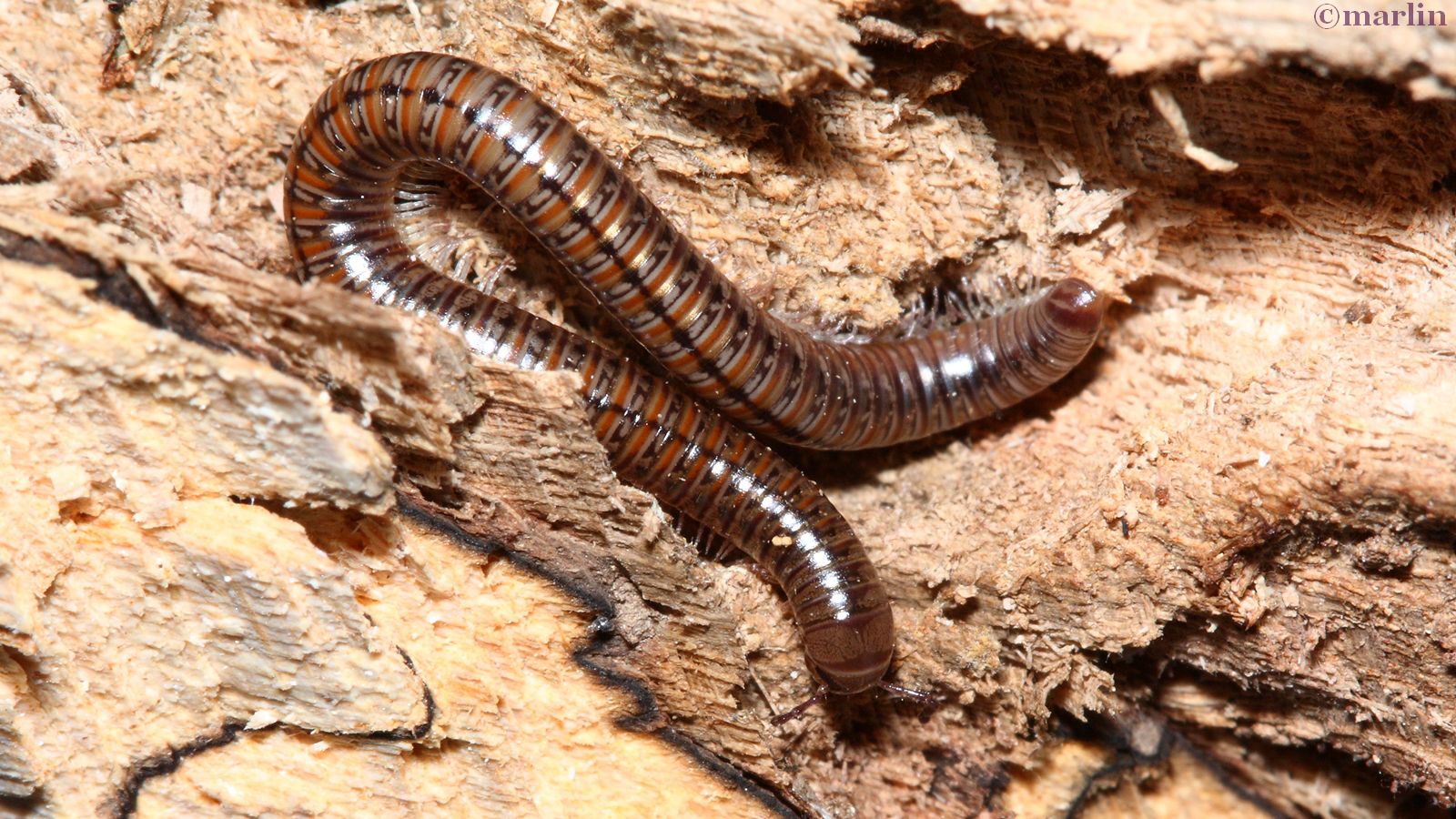Classes Diplopoda and Chilopoda
Millipedes and Centipedes
The house centipede pictured here is considered harmless to humans or their pets.
Size: Body = 25mm, overall = 7cm.
Centipedes are some of the oldest terrestrial animals, and some of the very first creatures to crawl from the sea onto the land were probably very similar in appearance to modern centipedes.
All centipedes are nocturnal predators which live by actively hunting down insects and other small animals. They are found mostly in tropical forests, but have also established themselves in temperate forests, deserts, and human habitations.
Most centipedes have between 15 and 30 pairs of legs, one pair on each body segment. Some of the larger centipedes can live longer than 10 years.
Centipedes and millipedes most often live outdoors in moist places such as leaf litter, or under rocks and decaying wood. The house centipede, however, lives indoors, especially in damp basements, bathrooms, or crawl and other excavated spaces under a house.
They can move very quickly, but they cause no damage to structures or their contents.
They do not infest food or “eat books” as is commonly believed.
House centipedes feed on spiders, bedbugs, termites, cockroaches, silverfish, ants and other household arthropods.
Brown centipede – Lithobius forficatus
Size: 20mm
This order has 95 genera and approximately 1500 described species. They are found in all sorts of habitats worldwide, especially in the tropic and temperate zones.
Forcipules are a unique feature found only in centipedes and in no other arthropods. The forcipules are modifications of the first pair of legs, forming a pincer-like appendage always found just behind the head. Forcipules are not true mouthparts, although they are used in the capture of prey items, injecting venom and holding onto captured prey [5].
Even non-venomous centipedes are considered frightening by humans due to their dozens of legs moving at the same time and their tendency to dart swiftly out of the darkness towards one’s feet. One 19th-century Tibetan poet warned his fellow Buddhists, “If you enjoy frightening others, you will be reborn as a centipede.” [5]
I most often find these strange creatures mucking about in rotten logs on the forest floor. Wikipedia tells us nobody is sure what they eat, but I would have to guess “anything that gets in their way.” The fossil record of centipedes extends back 430 MYA, so they must be doing something right.
Millipedes are arthropods in the class Diplopoda, which contains approximately 10,000 species in 13 orders and 115 families [3]. Diplopods have two pairs of legs per segment (except for the first segment behind the head). Each segment that has two pairs of legs is a result of two single segments fused together. Most millipedes have very elongated cylindrical bodies, although some are flattened dorso-ventrally, while pill millipedes are shorter and can roll into a ball like a pillbug.
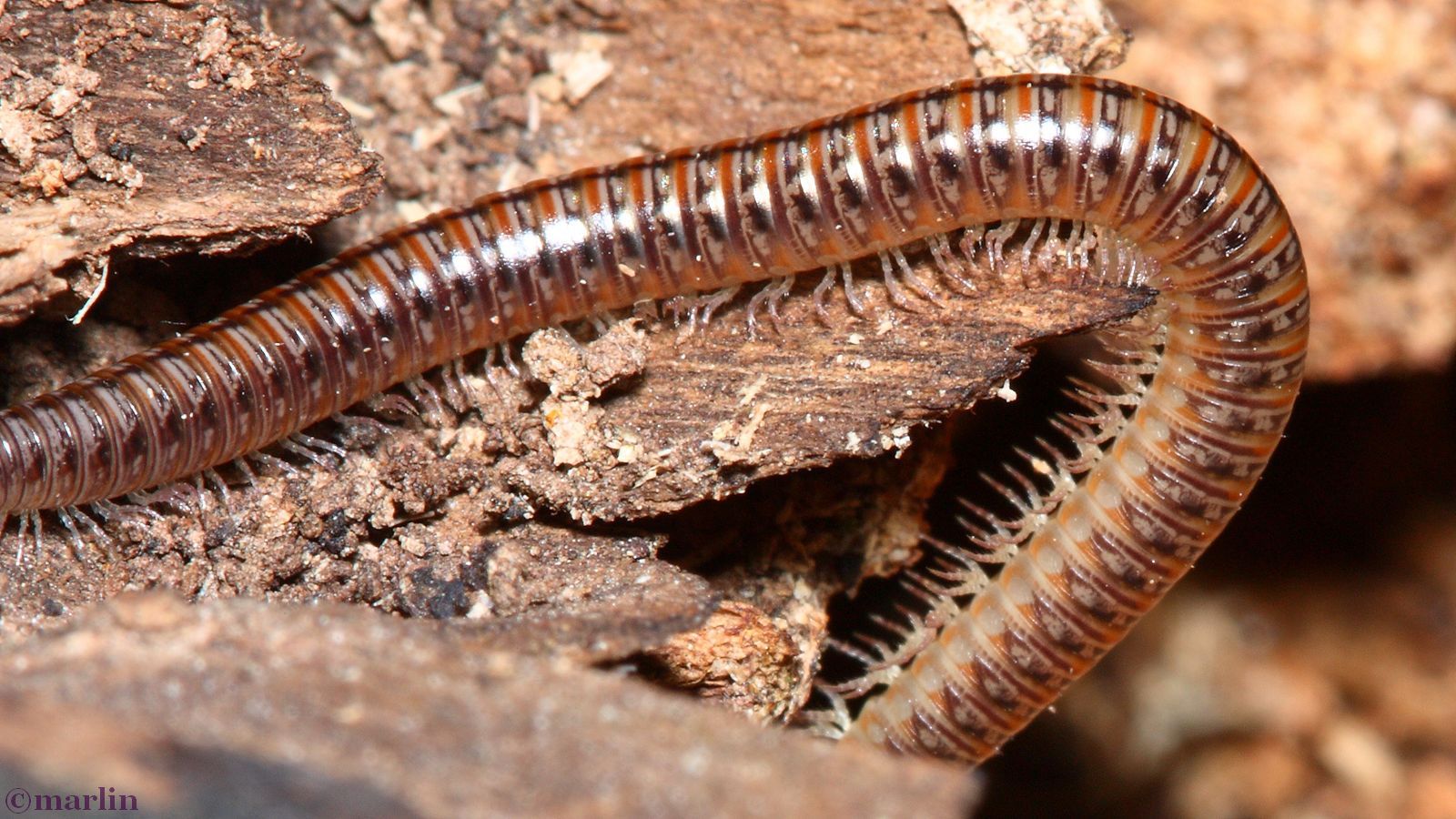
Most millipedes slow moving detritivores, that is, they eat stuff that’s just lying around – decaying leaves and other dead plant matter. However, some species eat live plants. Moisturizing their food with digestive secretions and then scraping it into their mouth with the jaws, they can be an agricultural pest, especially in greenhouses where they cause damage to seedlings.
Millipedes can be distinguished from the somewhat similar and related centipedes (Class Chilopoda) which have a single pair of legs for each body segment. Chilopods are active, carnivorous predators, in contrast to the slower, docile millipede.
References
- Bugguide.net, Scutigera coleoptrata
- Bugguide.net, Lithobius forficatus
- Wikipedia, Centipede

